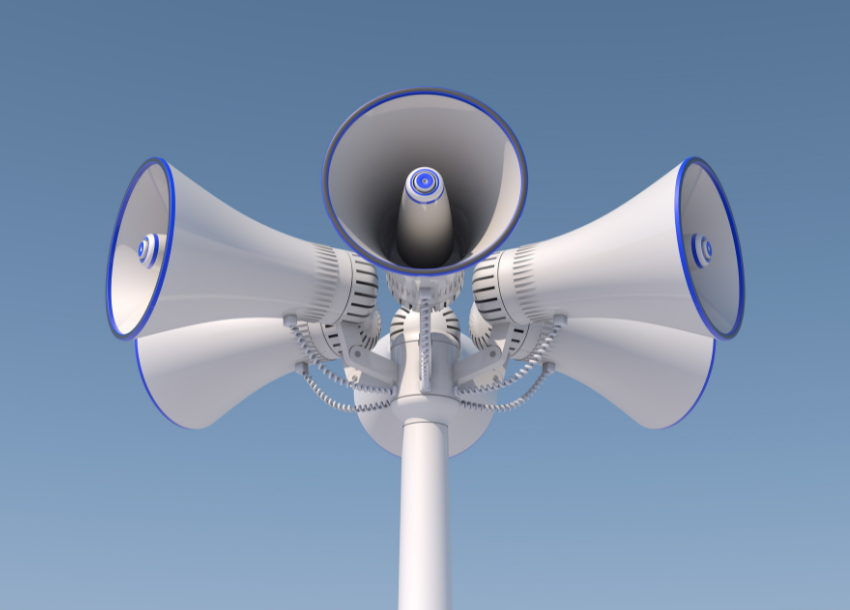Understanding the Pandemic Unemployment Assistance Program: What Employers Need to Know About the Department of Labor’s Recent Guidance to State Workforce Agencies
As the COVID-19 pandemic rolls on, both employers and employees continue to grapple with the resulting economic downturn and depressed labor market affecting nearly all segments of the workforce. The threat of infection has forced many businesses to scale back operations, and in some cases has led to temporary closures. In the wake of stalled business development, numerous employers have been compelled to furlough, or even terminate, large segments of their workforce. These widespread layoffs have produced staggering unemployment numbers, with more than 30 million Americans (15% of the U.S. workforce) now seeking unemployment benefits.
In an effort to stem the economic turmoil and provide assistance to those who are unable to work because of the pandemic, on March 27, 2020, the President signed into the law the Coronavirus Aid, Relief, and Economic Security Act (“CARES Act”). Among other things, the CARES Act creates a temporary federal unemployment insurance program, known as Pandemic Unemployment Assistance (“PUA”), which expands unemployment benefits to those who traditionally would be deemed ineligible (e.g., self-employed, independent contractors, gig workers). PUA also provides benefits for those who have exhausted state unemployment benefits, individuals seeking part-time employment, and those who lack sufficient work history to ordinarily obtain benefits, but who are able to work and would be looking for work, if not for COVID-19.
Under PUA, employees can receive enhanced unemployment payments that provide an additional $600 a week in benefits. To be eligible for PUA, an individual must be unemployed, partially unemployed, or unable or unavailable to work due to one of the COVID-19 related reasons enumerated in Section 2102 of the statute:
- The individual has been diagnosed with COVID-19 or is experiencing symptoms of COVID-19 and is seeking a medical diagnosis;
- A member of the individual’s household has been diagnosed with COVID-19;
- The individual is providing care for a family member or a member of the individual’s household who has been diagnosed with COVID-19;
- A child or other person in the household for which the individual has primary caregiving responsibility is unable to attend school or another facility that is closed as a direct result of the COVID-19 public health emergency and such school or facility care is required for the individual to work;
- The individual is unable to reach their place of employment because of a quarantine imposed as a direct result of the COVID-19 public health emergency;
- The individual is unable to reach their place of employment because the individual has been advised by a health care provider to self-quarantine due to concerns related to COVID-19;
- The individual was scheduled to commence employment and does not have a job or is unable to reach the job as a direct result of the COVID-19 public health emergency;
- The individual has become the breadwinner or major support for a household because the head of household has died as a direct result of COVID-19;
- The individual has to quit their job as a direct result of COVID 19; or
- The individual’s place of employment is closed as a direct result of the COVID-19 public health emergency.
After the passage of the CARES Act, state workforce agencies scrambled to update existing application processes and infrastructure, but there was initially little guidance from the U.S. Department of Labor regarding actual implementation of the PUA program. However, on April 27, 2020, the DOL issued a letter to state workforce agencies addressing many questions posed by states related to administration of PUA. While much of the information in this letter is intended to provide technical assistance to states implementing PUA, there are a few golden nuggets for employers that offer clarity on some of the issues vexing those businesses that have downsized their employee headcount and either seek to return employees to work or understand the full range of unemployment benefits available. These helpful tidbits are outlined more fully below.
Are PUA benefits impacted by FFCRA leave?
In some cases, yes. As set out in the CARES Act, employees who are receiving either Emergency Paid Sick Leave or Emergency FMLA leave under the Families First Coronavirus Response Act (“FFCRA”) are not also eligible to receive PUA benefits at the same time. However, while FFCRA emergency leave requirements only apply to employers with fewer than 500 employees, PUA benefits apply to all employers, regardless of size. As a result, an employee who works for a large employer (more than 500 employees) who would otherwise not be eligible for emergency leave for a COVID-19 related reason may still be eligible to receive PUA benefits. For example, if an employee who works for a large employer is unable to come to work due to a school closure, the employer would not be required to provide emergency leave under the FFCRA. However, because inability to work due to school closures is also a COVID-19 qualifying reason under Section 2102 of the CARES Act, the employee could obtain PUA benefits, even if the employer has work for the employee to do.
How does unpaid medical leave affect PUA benefits?
An employee who is on an employer-approved unpaid medical leave is typically not eligible for state unemployment benefits because the employee is not able or available to work. Nevertheless, the employee may be eligible to receive PUA benefits if the need for medical leave falls into one of the COVID-19 reasons identified in the CARES Act. If the employee does not satisfy one of the COVID-19 related reasons and is otherwise not able to work or available for work, he or she is not eligible for PUA benefits.
What are some of the relevant process changes for PUA as compared to regular state unemployment benefits?
States are not required to have a separate initial claim application for the PUA program, but they must be able to identify those individuals who are filing under the PUA program for purposes of making decisions about eligibility for benefits, appeals, and reporting. Unlike the normal state-issued unemployment benefits, employees seeking PUA benefits are not required to meet a minimum monetary threshold, but base period wages are considered when calculating the individual’s weekly benefit amount. PUA also does not require proof of employment, but instead, requires that the employee self-certify that one of the COVID-19 related reasons identified in Section 2102 of the CARES Act applies to his or her situation. This certification (either in paper form or online) requires: (1) the employee to identify the applicable Section 2102 CARES Act COVID-19 reason that he or she is unable to work, (2) a notice advising the employee that intentional misrepresentation on the self-certification is fraud, and (3) an acknowledgement from the employee that the self-certification is made under penalty of perjury.
States retain discretion to make other modifications to normal processes, such waiver of waiting periods for receipt of benefits and relaxing requirements for continued job searches during the benefits period.
If we have work available and an employee refuses to return to work, can the employee still receive PUA benefits?
As the classic lawyer response goes, it depends. Eligibility for PUA benefits requires that the employee be able to work and available to work within the meaning of applicable state law, unless the employee is unable or unavailable to accept the offer of work because of a COVID-19 reason listed in the CARES Act. If the employee refuses to return to work when called back by the employer because the employee wants to continue to receive unemployment benefits, the employee is not unemployed, partially unemployed, or not able or not available to work for one of the COVID-19 related reasons listed in the CARES Act. So, the individual would not qualify for PUA in this situation. Likewise, employees who have not been advised by a healthcare provider to self-quarantine due to COVID-19 concerns (and otherwise do not meet any of the other COVID-19 related criteria), but refuse to return to work due to a general fear of exposure, are not eligible for PUA benefits.
But, employees who remain out of work for a COVID-19 related reason, as defined by the CARES Act – such as, employees who are unable to reach their place of employment due to a stay-at-home, shelter-in-place, or other order that requires them to stay home in quarantine to reduce the spread of COVID-19 or those who have been advised by a healthcare professional to self-quarantine due to a compromised immune system by virtue of a serious health condition – may still obtain PUA benefits, even if the employer has work for the employee to perform.
What happens to PUA benefits in the summer for an employee who is a primary caregiver for a child and could not work due to a COVID-19 school closure?
After the 2019-2020 school year ends, a school is no longer considered closed as a direct result of the COVID-19 public health emergency, for purposes of the CARES Act. The DOL has states that once the regular 2019-2020 school year is over, parents should rely on their customary summer arrangements for caring for their children. Absent some other qualifying circumstances, the employee will not be eligible to receive PUA. However, if the facility that the employee relies on to provide summer care for the child is also closed as a direct result of the COVID-19 public health emergency, the employee may continue to qualify for PUA benefits.
As employers move to revamp businesses and reestablish their workforce, COVID-19 concerns and issues may continue to require attention, including an understanding of the unemployment benefits available to employees who are unable to return to work due to the virus. Employers who seek to return employees from furlough or rehire personnel may be subject to FFCRA emergency leave requirements and may have employees who qualify for PUA after FFCRA leave is exhausted, if the employee would otherwise be available to work, if not for a COVID-19 qualifying reason. Understanding the benefits available to workers, as well as the legal requirements imposed on employers, will ensure a smoother transition as employees return to their jobs.
If you have questions about the PUA program, the FFCRA, or any other COVID-19 issue, please reach out to one of our attorneys who can help you navigate this unprecedented pandemic.
Our insights are published as a service to clients and friends. They are intended to be informational and do not constitute legal advice regarding any specific situation.
About Maynard Nexsen
Maynard Nexsen is a full-service law firm with more than 550 attorneys in 24 offices from coast to coast across the United States. Maynard Nexsen formed in 2023 when two successful, client-centered firms combined to form a powerful national team. Maynard Nexsen’s list of clients spans a wide range of industry sectors and includes both public and private companies.







